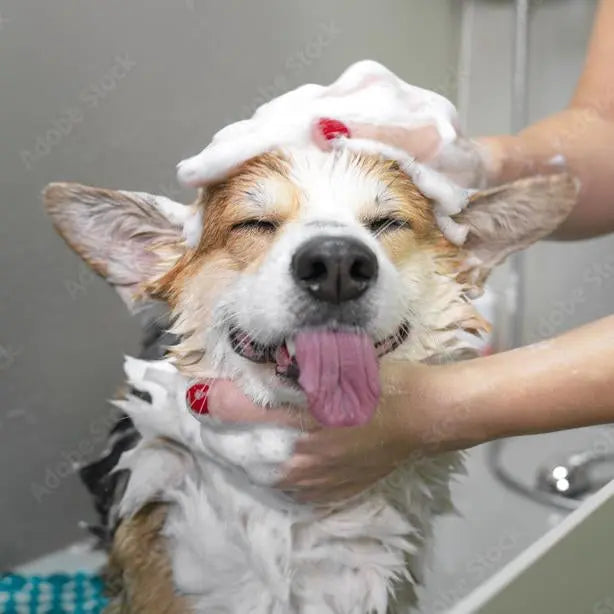
Dog Grooming our Top Tips
Dog Grooming: Our Top Tips
Keep Your Furry Friend Looking Their Best with our Dog Grooming Essential Guide
1. Regular Brushing
An essential dog grooming guide should include regular brushing, which is necessary to keeping your dog's coat healthy. Depending on the breed, brushing frequencies can vary from daily to weekly. Brushing helps remove dirt and loose hair and prevent matting. Additionally, it distributes the natural oils produced by your dog's skin, giving its coat a healthy sheen. Use a brush suitable for your dog's coat type and fur length for best results. Regular brushing is essential for all dogs but is especially important for long-haired breeds.

2. Proper Bathing
Bathe your dog every 4-6 weeks using a shampoo specifically designed for dogs. Human shampoos can be too harsh for their skin and coat. Bathing too frequently can strip away the natural oils, leading to dry skin and irritation. Make sure to thoroughly rinse out all shampoo to avoid leaving any residue that could cause itching.
3. Nail Trimming
Trimming your dog's nails is crucial for their comfort and health. Long nails can cause pain and lead to difficulty walking or even infections. Use a dog-specific nail clipper and trim a small amount at a time to prevent cutting into the quick, which is the sensitive part of the nail. If unsure, ask your vet or a professional groomer for guidance.

Look for dog-specific nail clippers with a protective guard to ensure you don't accidentally cut the nail quickly.
4. Ear Cleaning
Regularly check and clean your dog's ears to prevent infections. Dirt, wax, and moisture can build up in the ears, allowing bacteria and yeast to grow. Use a vet-approved ear cleaner and gently wipe the outer ear with a cotton ball. Avoid using cotton swabs, which can push debris further into the ear canal.
5. Dental Care
Oral hygiene is essential for your dog's overall health. Brush your dog's teeth several times a week using a dog's toothbrush and toothpaste formulated for canines. Dental diseases can lead to other health issues, so regular brushing helps prevent plaque buildup and gum disease. Additionally, providing dental chews can aid in maintaining your dog's oral hygiene.
6. Eye Care
Gently wipe around your dog's eyes with a damp cloth to remove any discharge or debris. This helps prevent staining and keeps the eye area clean. Watch for signs of redness, irritation, or excessive tearing, which may indicate a problem requiring a vet's attention. Regular eye care can help avoid infections and other eye-related issues.
7. Coat Trimming
Depending on your dog's breed, regular trimming may be necessary to keep their coat manageable and free from mats. Some breeds require frequent trims, while others may only need occasional maintenance. If you're not comfortable trimming your dog's coat yourself, consider taking them to a professional groomer who can provide the proper care.
8. Check for Parasites
Dog grooming should include regularly inspecting your dog's coat and skin for ticks, fleas, and other parasites.
Early detection and treatment are crucial to prevent infestations and related health problems. Use preventive treatments your vet recommends, such as topical solutions, collars, or oral medications, to keep these pests at bay and ensure your dog remains healthy and comfortable.
9. Teeth Cleaning
Brush your dogs teeth regularly. You can buy toothbrushes that are designed for dogs. Dog chew toys designed for teething can be effective for dental care.

No comments








0 comments